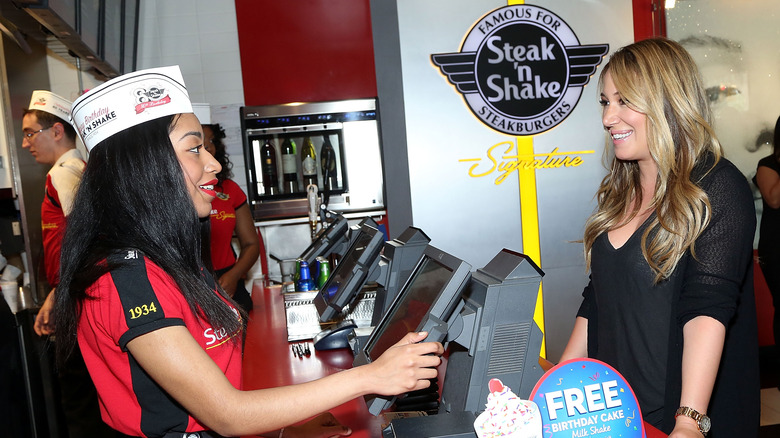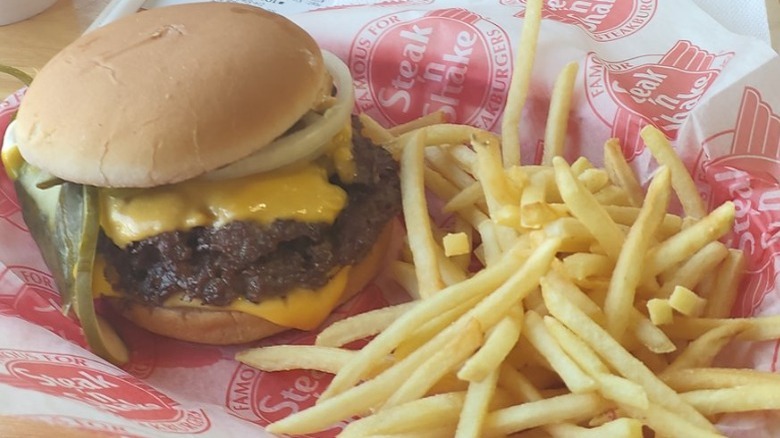The Real Reason Steak 'N Shake Restaurants Are Disappearing
Like any industry, restaurants are having to adapt to stay in touch with modern needs and demands. A particular concern outlined by CNN Business is that young people aged between 18 and 24 are less inclined to go to restaurants than their equivalents in previous decades, meaning that they may not turn into long-term customers. Discounts, loyalty programs, and celebrity promotions are all noted as being necessary improvements.
Steak 'n Shake, however, is a company that has struggled to get with the times. Even Sardar Biglari, chairman of the company's parent company, admits to QSR that the restaurant chain "was built in the 20th Century on a 20th Century business model." Indeed, Steak 'n Shake trumpets its milkshakes and Steakburger, which have been around since the business was formed in 1934.
In 2021 Steak 'n Shake finally produced a profit after several years of failing to do so, but Restaurant Business reports that profitability has been helped by the company not having to write off as many financial issues generated by its restaurants — possibly because, as Restaurant Business notes, Steak 'n Shake has shut 90 stores since 2018. So why are so many locations closing, and how does Steak 'n Shake hope to boost its success?
Steak 'n Shake has been short of cash
Restaurants have been affected by a combination of labor shortages, problems with supplying goods, and rising prices, according to Forbes — obviously making them more expensive to run. The price of beef, for example, has reached its highest level since 1989, details Bloomberg — bad news for Steak 'n Shake, a company that prides itself on filling its iconic Steakburgers with "100% pure beef patty," according to the company's website.
To tackle these issues — and the long-term inefficiency that brought Steak 'n Shake to the brink of collapse in early 2021 because of a $153 million debt (via Restaurant Business) — the way they do business has been overhauled. The company has moved towards fast food rather than labor-intensive dining service, reports Restaurant Business, and has transferred 159 stores to franchisees. These efficiency improvements have boosted average employee sales from $64,000 to $118,000.
Despite store closures, QSR reports that Steak 'n Shake intends to re-open many of them by passing them onto franchisees — consequently taking a $10,000 investment fee, up to 15% of franchise sales, and 50% of profits without having to manage day-to-day business. The plan isn't guaranteed to be successful, but it will be cheaper for Steak 'n Shake to move the responsibility of stores elsewhere.

